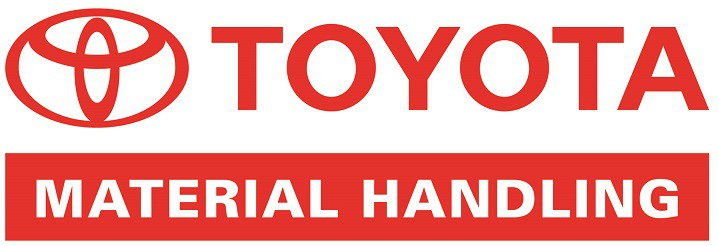
Digital Innovation in material handling is not a technology play. It is an organizational challenge. Digital technologies flood the organization with information. The bureaucratic boxes can quickly become overwhelmed. According to The Technology Fallacy: People Are the Real Key to Digital Transformation (Kane, 2019), “Only by fundamentally changing the way the organization works—through flattening hierarchies, speeding up decision making, helping employees develop needed skills, and successfully understanding both opportunities and threats in the environment—can an organization truly adapt to a digital world” (pg. 24.) Digital transformations require a new mindset and a new approach to management that is more open, agile, collaborative, and experimental (Sink, 2006). It also requires a team of people with enough cognitive diversity to deal with the complexities of transformation (Page, 2008; Reynolds and Lewis, 2017).

In February 2021, our Purdue University team begins working with a group of manufacturers to accelerate digital innovation of their material handling processes. This work is being done in partnership with Toyota Material Handling’s University Research program. Participating companies need not be Toyota suppliers. Toyota Material Handling sees these tools and frameworks as potentially valuable in accelerating material handling innovation. Our work with participating firms will include three phases: (1) a technology adoption curve position assessment, (2) a strategic diversity assessment, and (3) a Strategic Doing Pilot. The following is an overview of these phases.
Technology Adoption Curve Position Assessment. Every organization is at a specific point on the s-shaped technology adoption curve. Knowing where they are on this curve, provides valuable insights that inform the way in which they adopt and implement technology innovations, including those related to material handling.

Strategic Contribution Analysis powered by AEM-Cube. Transformation, growth, and innovation are team sports, not solo ventures. Complex undertakings like these require a variety of ideas, mindsets, and areas of expertise to achieve results. This required variety doesn’t rest within the mind or experiences of an individual. Groups, organizations, and even groups of organizations have a much better chance of designing the complex solutions needed to address complex challenges. We call this kind of diversity, which encompasses individuals with different cognitive approaches, strategic diversity. A group or team’s level of strategic diversity greatly impacts their strategic contributions to growth, innovation, and transformation.
The AEM-Cube can be used measure strategic contributions at the individual, team, and strategic diversity at the team, group, or organizational level. The acronym “AEM” is a derived from the methodology’s three core dimensions: (1) Attachment, (2) Exploration, and (3) Management of Complexity. The ‘Cube’ in the name refers to the fact that these dimensions can be portrayed in a three-dimensional space. The following is an overview of these three dimensions.
Attachment: this dimension of the AEM-Cube focuses on our attachment to people and things. All of us are attached to both; but each of us is usually more attached to one or the other – those with whom we get things done (people) or how we do what needs to get done (tools, technologies, subject matter expertise, etc.)
Exploration: this dimension identifies the stages of growth and innovation where we contribute most: the earlier stages of the classic “s-curve” (discovery and exploration), the later stages (optimization and stability), or somewhere between the two.
Management of Complexity: this dimension helps us understand how we deal with complexity. Some of us are integrators, seeing the interconnectedness of a complex system. Others seek to gain a deep understanding of a more discreet part of the overall system. Each of us is somewhere on this continuum of managing complexity.
A Strategic Doing Pilot. Strategic Doing is a strategy and transformation discipline specifically designed for open, loosely-connected networks. Unlike strategic planning, that was developed primarily to guide strategic activity in hierarchical organizations, Strategic Doing is designed for situations in which nobody can tell anybody else what to do. Collaboration is the only way to move forward.

Strategic Doing works by teaching simple, but not easy, skills of complex collaboration. The skills are simple to understand, but they take practice to master. The skills are taught through strategy workshops. As these collaborations develop and participants learn from each other, Strategic Doing advances quickly. Short, focused strategy reviews take place regularly, usually every 30 days. With Strategic Doing, strategy and transformation becomes much like software development. New versions of the transformation strategy appear frequently as participants learn what works.
Methodology
Among theSME’s participating in this research project, two companies will be selected for these three interventions. Each SME will create a Material Handling Innovation (MHI) Team made up of 5-7 people. The Technology Adoption Curve Position Assessment will be administered to each SME’s entire workforce. Each member of the MHI Teams will complete the AEM-Cube Assessment.
The data from both the Technology Adoption Curve Position Assessment andthe AEM-Cube will be analyzed and presented to the MHI teams in a workshop at which they discuss their strategic advantages for digital innovation in material handling, their potential strategic vulnerabilities, and ways to leverage their advantages and mitigate their vulnerabilities.
Drawing on insights from the Technology Adoption Curve Position Assessment, the AEM-Cube Assessment, and the results from the material handling practices and barriers for digitization and automation assessment, the two participate in a Strategic Doing workshop at which they will develop a Material Handling Innovation Strategic Action Plan that includes a “pathfinder project”with success characteristics and metrics.These pathfinder projects will be accomplishable within a six-week timeframe.
Last, data will be gathered to evaluate the success of the pathfinder projects and the impact the Technology Adoption Curve Position Assessment, the AEM-Cube, and the Strategic Doing process on the execution of each Material Handling Innovation Pathfinder Project
References
Kane, G. (2019). The Technology Fallacy: People Are the Real Key to Digital Transformation. Research-Technology Management, 62(6), 44-49.
Page, S. E. (2008). The Difference: How the Power of Diversity Creates Better Groups, Firms, Schools, and Societies-New Edition. Princeton University Press.
Nilsen, E., Morrison, E., Asencio, R., and Hutcheson, S. (2017). Getting “there”: understanding how innovation and entrepreneurship become part of engineering education.” American Society for Engineering Education, Annual Conference, in Proceedings of the 2017 ASEE Annual Conference, Columbus, OH, June 2017, Paper ID #18624.
Morrison, E., Hutcheson, S., Nilsen, E., Fadden, J., & Franklin, N. (2019). Strategic Doing: Ten Skills for Agile Leadership. John Wiley & Sons.
Reynolds, A., & Lewis, D. (2017). Teams solve problems faster when they’re more cognitively diverse. Harvard Business Review, 30.
Swink, M. (2006). Building collaborative innovation capability. Research-technology management, 49(2), 37-47.